ISPManager, established in 2004, has emerged as a leading web hosting control panel, boasting a user-friendly interface for server management tasks. With a track record of nearly two decades, it has gained popularity within the hosting industry. ISPmanager simplifies web hosting server administration, offering features such as website hosting, email configuration, and database management, and is trusted by over 80% of hosting providers and companies worldwide. Its scalability and efficiency make it the go-to choice for businesses seeking robust web hosting infrastructure management solutions.
- Step 1: Generating a CSR and Private Key
- Step 2: Order and Configure the SSL Certificate
- Step 3: Upload the SSL Certificate Files to your Server
- Step 4: Enable the installed SSL Certificate
- Step 5: Test the SSL Certificate
Step 1. Generating a CSR and Private Key
Head over to SSLTrust's CSR Generator and generate your CSR and Private Key.
Once you have filled in all the details, make sure to save the Private Key and CSR in a secure location.
Step 2. Order and Configure the SSL Certificate
The next step in the installation process is to order an SSL Certificate. We recommend SSLTrust because of our exceptional Customer Service, Money Back guarantee and SSL Installation Service.
If you have one website, you can now secure one domain name from a variety of cheap, easy and fast to implement SSL Certificates.
However, if you are a business website, we recommend getting a Business SSL because it gives your visitors the complete level of trust which includes a Site Seal and validation by a Certificate Authority (CA). You might want to have a look at getting GeoTrust SSL such as the True Business SSL.
Additonally, if you have multiple subdomains, it might be worthwile to check out Wildcard SSL Certificates because you can get all of your subdomains verified in just one go and elimates the need of purchasing multiple SSL Certificates.
If you need help choosing the right SSL Certificate, our sales/support team is here to help. Just reach out to them, and they'll be glad to offer their assistance.
1: Once you've added the SSL Certificate into your cart, you can now click on Checkout to complete the process.

Fill in your account details

Choose your preferred mode of payment and click on checkout.
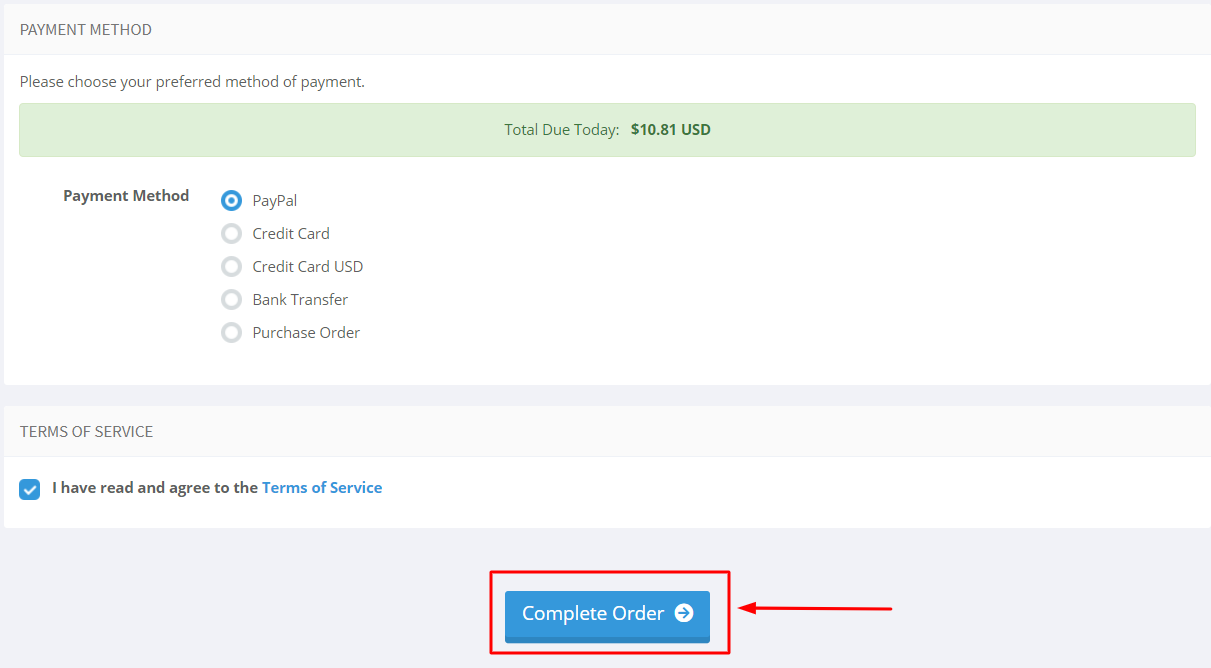
2: After you have purchased the SSL Certificate, you can start the configuration process.
This can be started by going into your SSLTrust account and managing your recent purchase.
Head over to the SSLTrust Dashboard and under Services, select My Services.
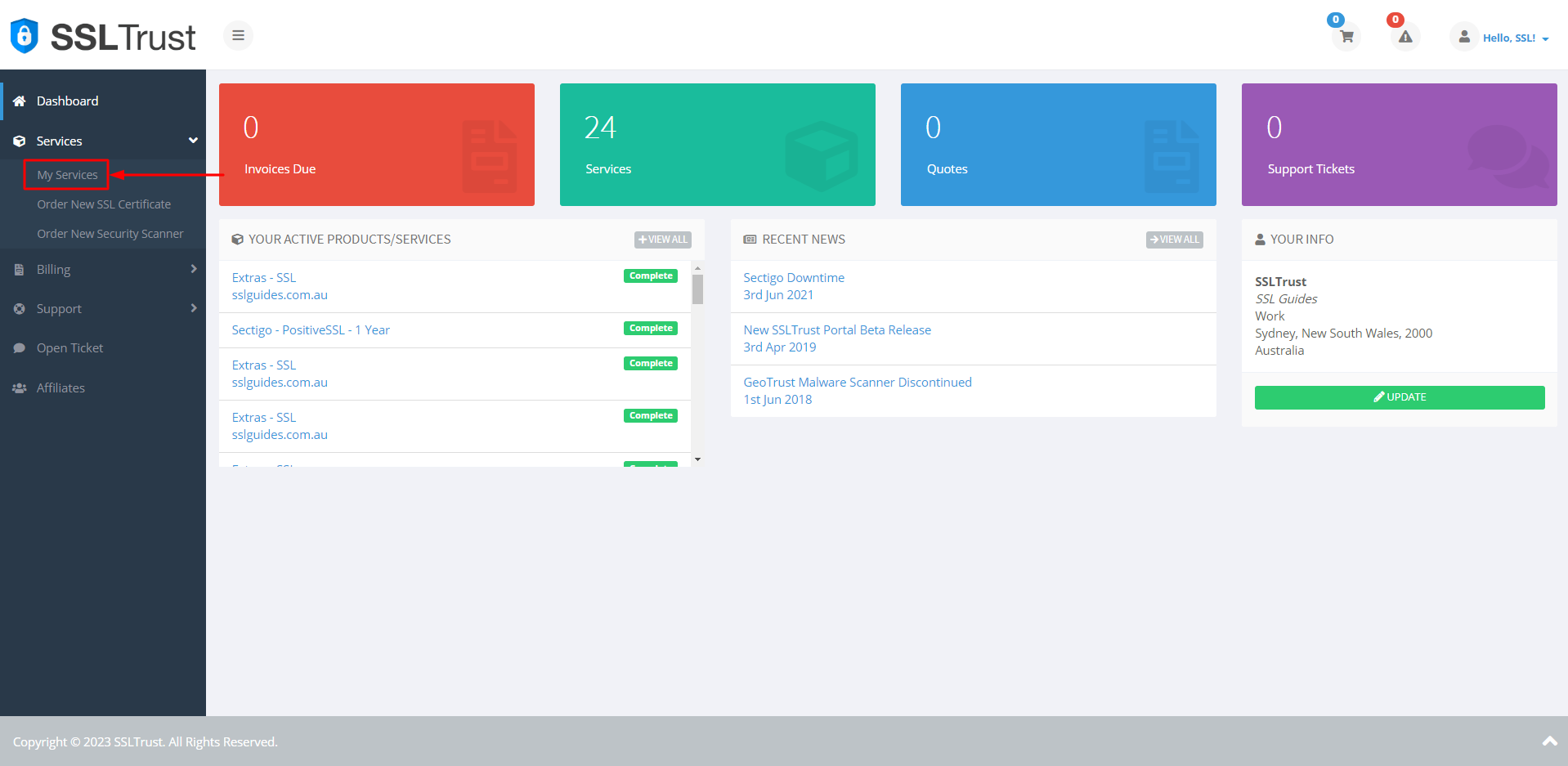
You should be able to see your purchased certificate and order status, now click on Manage

This will take you to the Product Details of your SSL Certificate. Click on start configuration to do the configuration yourself or you can provide the URL below to the appropriate person to complete the configuration for you.

3: Copy and paste the previously generated CSR (Certificate Signing Request) which should include:-
-----BEGIN CERTIFICATE REQUEST----- -----END CERTIFICATE REQUEST-----
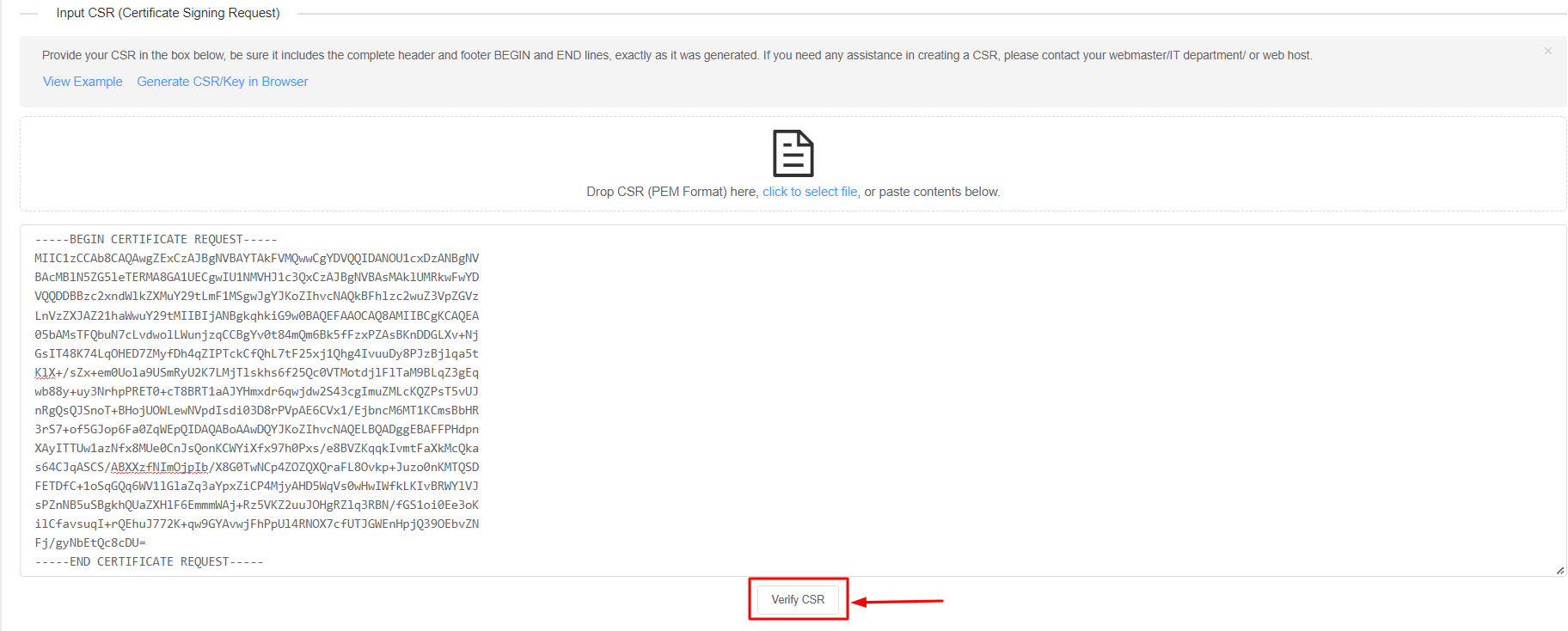
Then, click on Verify CSR.
If the CSR details match the inputs you've entered before, you can now proceed or else generate a new CSR with proper details.

Select the Server Type and click on Next Step>

4: Fill in your contact information

If you have a technical contact managing the certificate for you, please enter their details.
They will also have permission to manage the Certificate and will be sent renewal reminders.
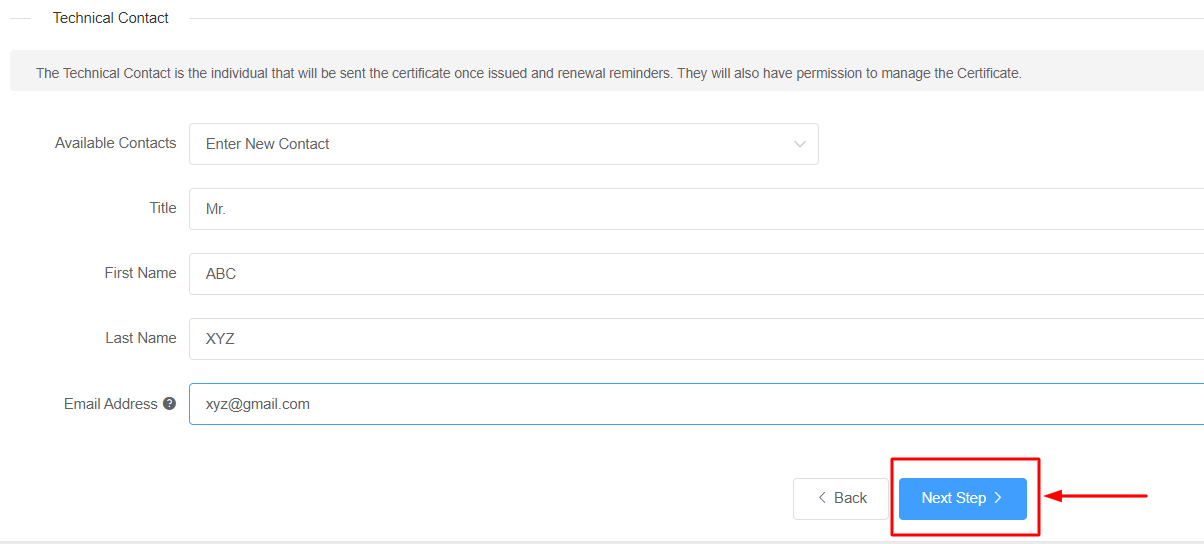
To obtain a business SSL certificate, you will need to provide your business details, including your correct address, phone number, and legal entity name. The Certificate Authority will verify the accuracy of this information. If there are any mistakes, it may cause delays in the process.
Then, click on Next Step>
5: The next step in this process is Domain Control Validation (DCV). Basically, Domain control validation is a process used to verify that the person or organization requesting an SSL/TLS certificate for a domain has the authority to control that domain. There are several different methods that can be used to perform DCV, including email validation, DNS validation, and file-based validation.
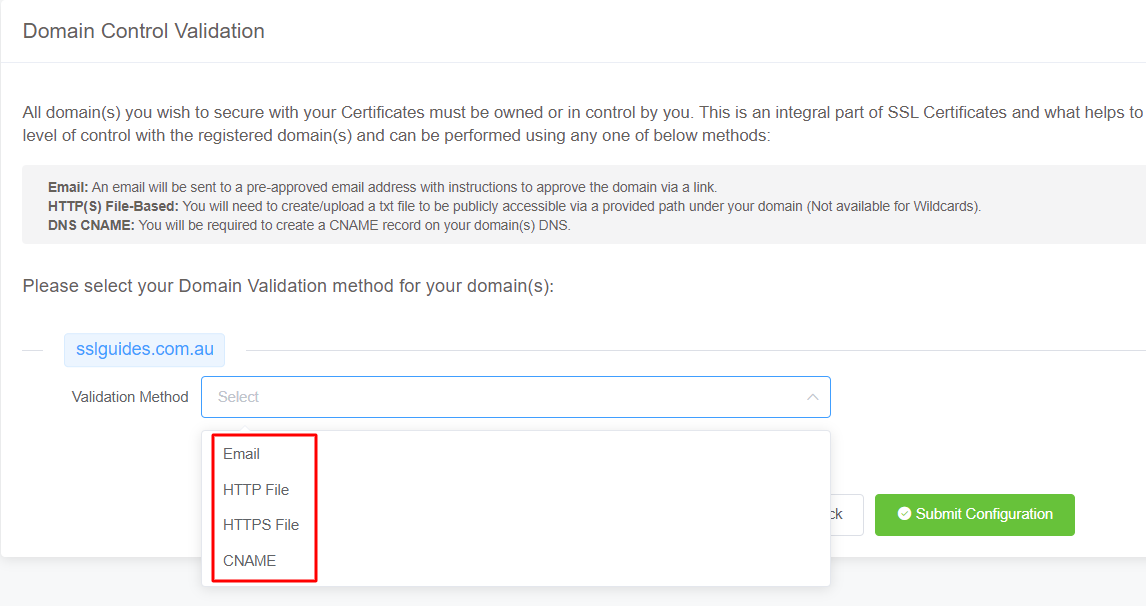
Select the method that is easiest for you. Having an email address with the domain name will be the quickest.
You will be sent an email containing a link which when clicked upon should validate your domain name.
In HTTP/HTTPS File Validation Method, you can create a folder in the specified and directory, paste in the contents and your domain should be validated.
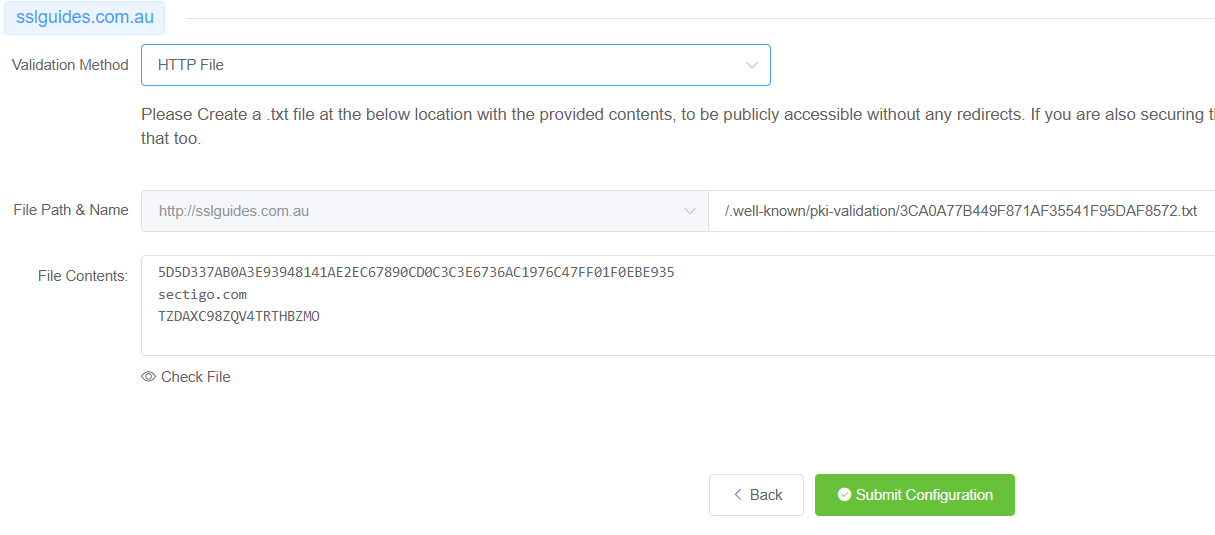
The final method to validate your domain name would be CNAME Validation. Basically you have to create a CNAME record in your DNS Settings to validate your domain name and then click on the Check DNS Record button to verify DNS changes.
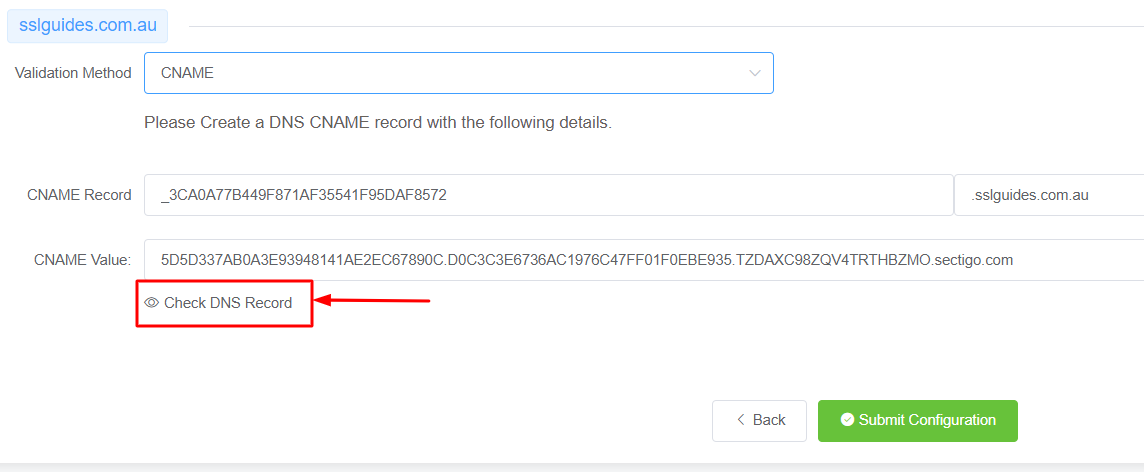
After a few seconds or minutes depending on your DNS propagation speed, the CNAME record should be verified.

The configuration should be a success. Click on the button below to access the validation manager.
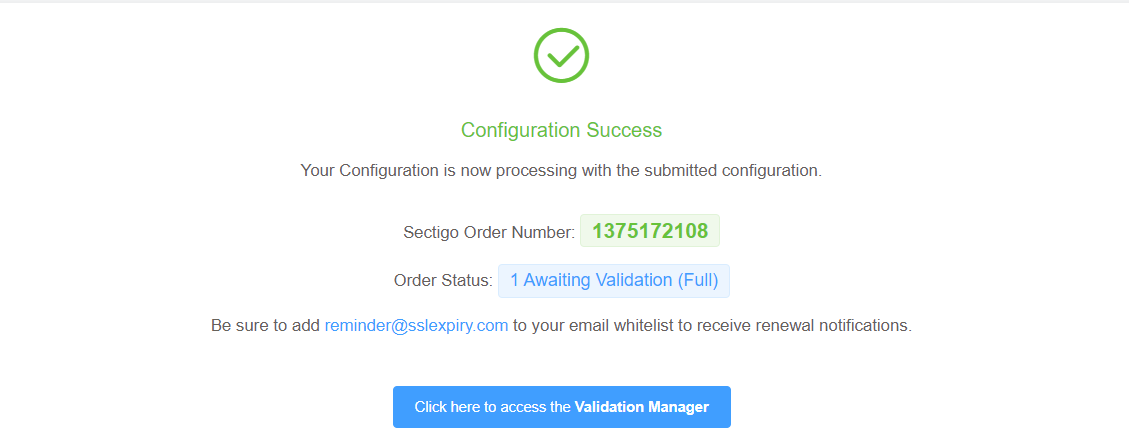
6: Your certificate should have now been issued if you completed all the above steps correctly.

If not, click on Domain Control Validation, and re-submit whatever method you chose for validation.
Upon completing domain validation using the chosen method, your SSL certificate will be issued. If you have ordered a Business SSL, you will need to wait for the Certificate Authority to verify your business address and phone number. If the validation process has not been completed or you have not received your certificate after a certain period of time, please reach out to the support team to check on the status of your certificate.
Step 3. Upload the SSL Certificate Files to your Server
Once your SSL certificate has been issued, you will receive an email with the certificate directly from the Certificate Authority. Alternatively, you can download the certificate from the SSLTrust Portal, which presents the certificate in a convenient, easy-to-use format.
Again, head over to the SSLTrust Dashboard and click on your certificate:-
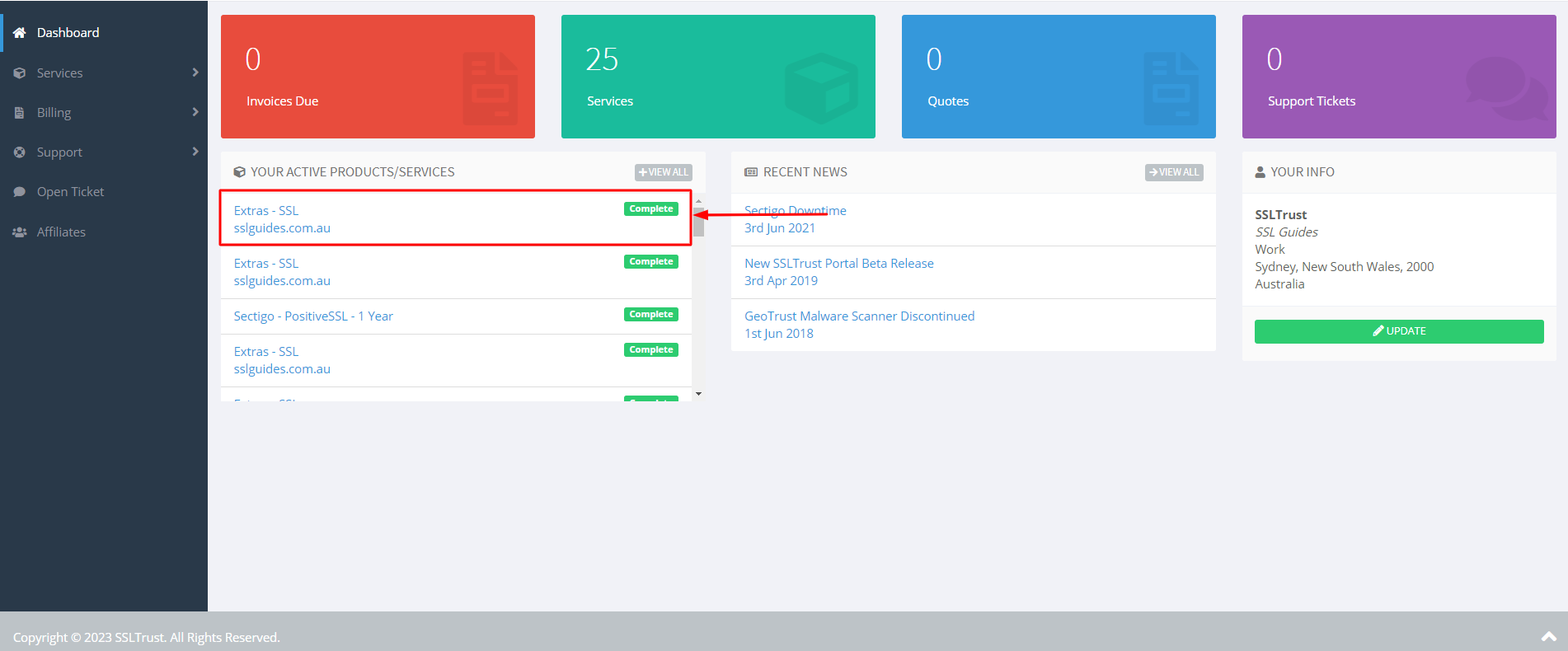
1: Click on Collect/Download Certificate-
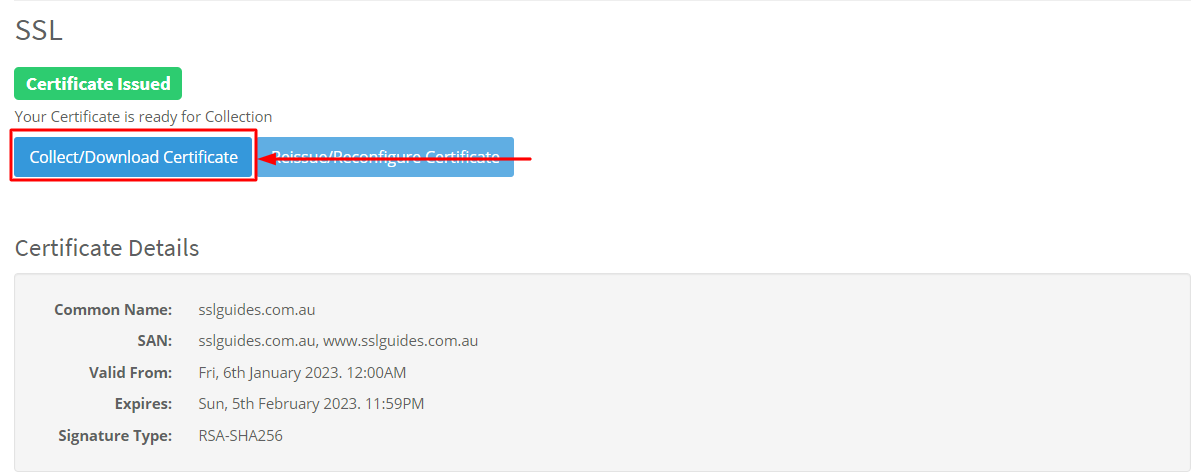
Go to the first column and click on copy to clipboard
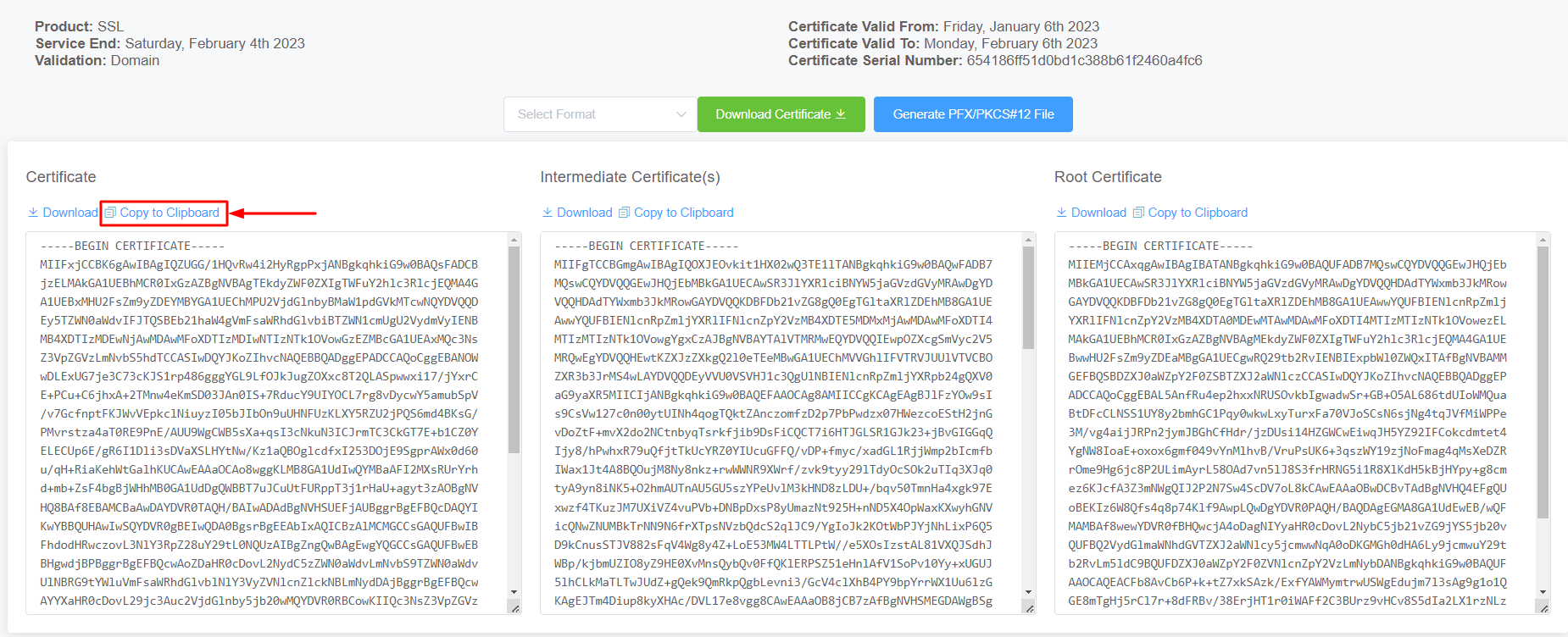
2: Navigate to
http://yourdomain.com:1500/ispmgrand login as root

3: Select the SSL Certificates option on the Menu on the left
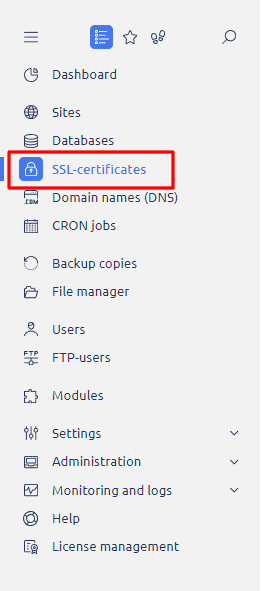
4: Click on Add Certificate

5: Select Certificate as Existing

6: Paste all the certificate data starting with the copied SSL Certificate and then the Private Key
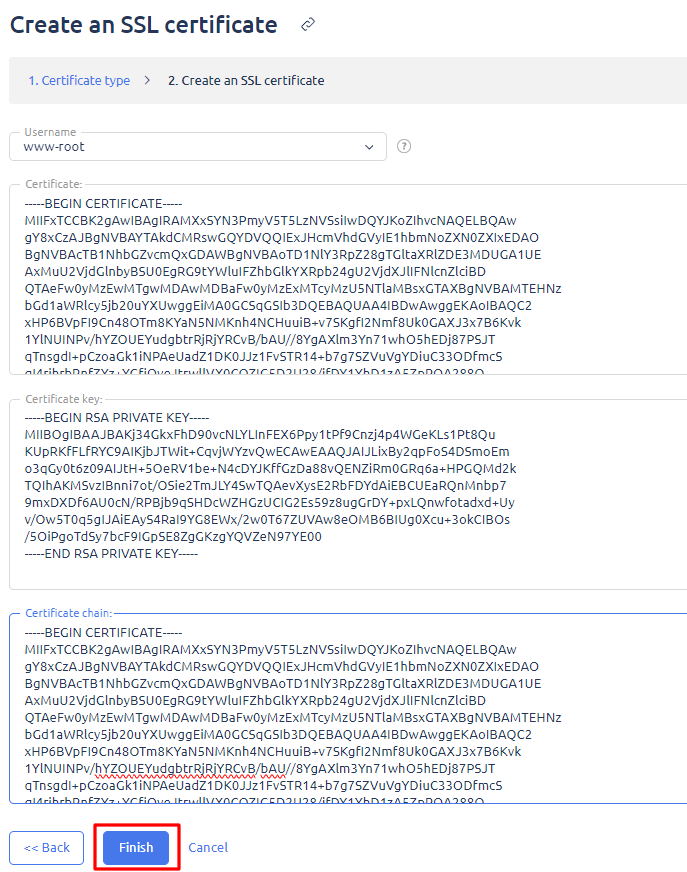
Further, head back to the certificate collection page and copy and paste the Intermediate Certificate in the Certificate Chain Dialog box

7: Then, click on Finish
Now, navigate to
https://yourdomain.comto view your secure website.
Step 4. Enable the installed SSL Certificate
1: Head back to the ISPManager Dashboard and navigate to Sites on the top left menu
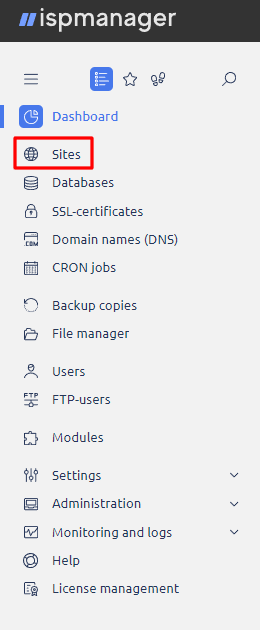
2: Double click on your website

3: Choose your Installed SSL Certificate and click on Save
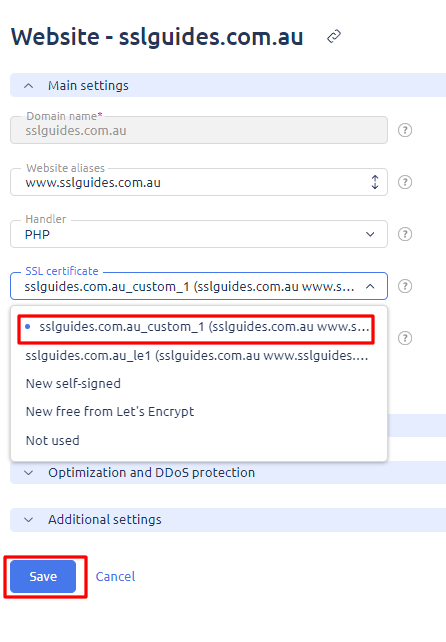
Step 5. Test the SSL Certificate
It is a good idea to go to your website and see if it works via https://www.yourdomain.com We also recommend you use this tool to check the install has been completed successfully: www.ssllabs.com/ssltest/
For custom port/Localhost SSL Testing, check out another tool here
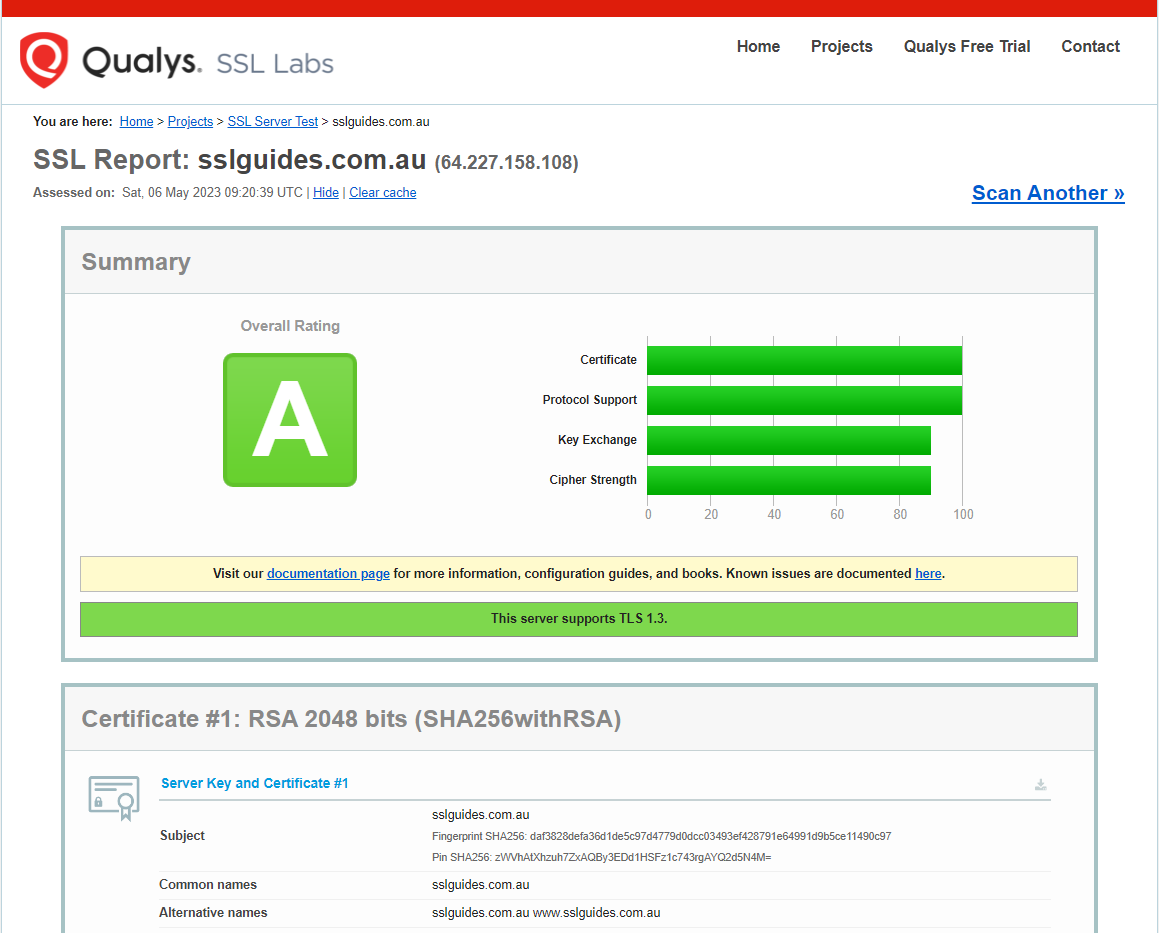 You may need to get your web developer, or update your website yourself, to make sure all files use https:// and all links to your site and within your website use https://
You may need to get your web developer, or update your website yourself, to make sure all files use https:// and all links to your site and within your website use https://
If you require any assistance with your SSL Installation please contact our friendly support team.
